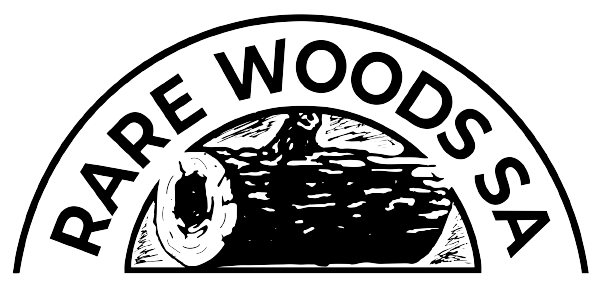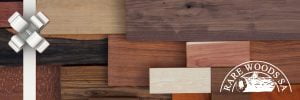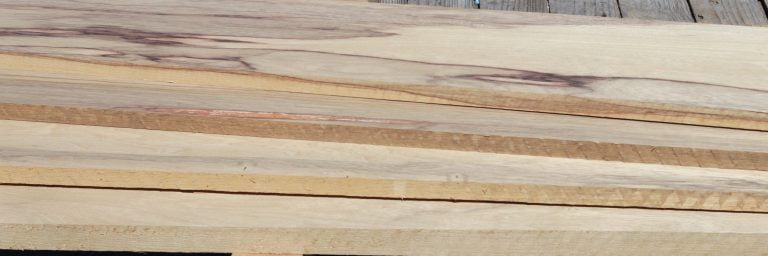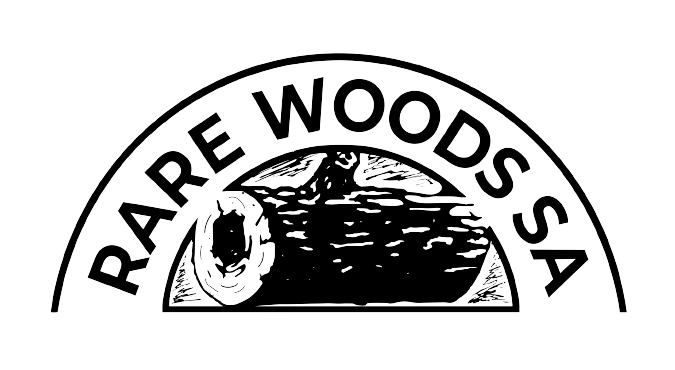Ofram
Quick Look
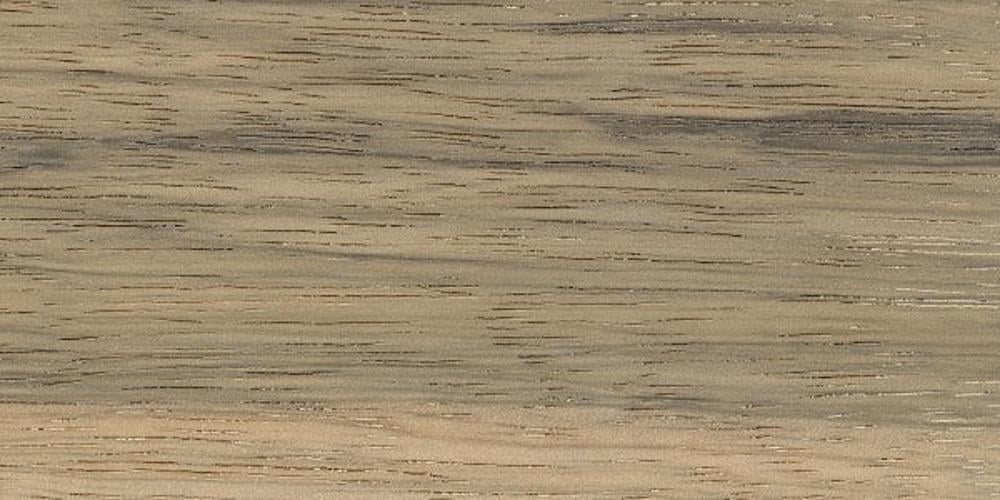
Ofram has been an historically important wood in Africa, sue, in part, to its universal popularity. Although its population was considered threaten, from overexpolitation in the first half of the 20th century, a concerted effort was made — a most successful one — to preserve the species and expand its natural range, through numerous regional and national efforts made from the ’50’s through the ’70’s, all over West and Central Africa.
Ofram has a characteristic light base color, ranging from a pale yellow to a light golden brown, to a pale tan — and sometimes muted to the point of having a greyish appearance. It often has dark brown or black overlapping highlights (as well as lighter colored patches, occasionally, ranging from yellow to orange), which is what distinguishes White Ofram (also called “Korina”) from Black Ofram (same wood / same species; just differing aesthetics). Its sap is only slightly lighter in color than its heart and can sometimes be difficult to discern.
Despite its medium to coarse texture and a small silica content, its typically straight grains (those sometimes irregular or interlocked) and modest hardness and density make it generally quite easy to work. Its glues and finishes well (with a moderate natural luster); its base color takes on a more golden tone under a clear lacquer finish. It is considered neither a tough or durable wood, so such finishing is recommended.
Not listed in the CITES Appendices or on the IUCN Red List of Threatened Species.
Why We Love This Wood
This wood became quite popular with US electric guitar builders, after being glamorized by Gibson Guitars in 1958, with its exclusive use as a body and neck wood with the introduction of their radical "Flying V" and "Explorer" models. (It was Gibson who actually dubbed the name "Korina" for the wood -- a name by which it is now commonly known, and called, within the US guitar luthier community.) To this day, it remains a very popular wood for guitar necks and, especially, bodies; although it should be noted that the wood is decidedly non-durable and is susceptible to insect attack. By the early 1950's, the wood was thought to be severely endangered. Efforts were made to replant the wood in plantations across it natural range, for the next twenty-plus years, the results of which witnessed the species expand beyond its original rainforest habitat -- making its way into savannah areas and even penetrating regional evergreen forests.
Quick Look

Vital Statistics
| Main Color Group | Variegated |
| Grain Pattern | Pronounced |
| Avg Dry Weight - LB/FT3 | |
| Avg Dry Weight - KG/M3 | |
| Janka Hardness - LBF | 670 |
| Janka Hardness - N | 2990 |
A Popular Choice in
Search With Filters
- Lengths: Various standard lengths available.  Your last plank will be shorter to round off the m3 you selected.
- Thickness: Various standard thicknesses available.
- Widths: Random widths, 100mm & up (average 140mm)
R3,588.00
Other Species
Durable and relatively affordable, European Chestnut is a popular cladding species in Europe. With looks similar to Oak and Ash, we are sure you will love the appearance of Sweet Chestnut. Grain can be interlocked, but Chestnut is still relatively easy to work. It can split relatively easily, so pre-drilling is essential.
This is a new species for us here at Rare Woods and a first for South Africa. We are delighted with what arrived and can’t wait to get it into some of your projects.
Detail
Common Uses
Longhi is an African wood with similar working properties to its more well-known cousin, Anegre. Its color varies from a greyish-white to beige to pinkish-brown color, which slightly darkens with age and UV-ray exposure. Its generally light appearance makes sapwood difficult to distinguish. Its grains are typical straight (though occasionally interlocked) and its texture ranges between fine and medium-fine. It can sometimes possess mottled or subtle tiger-striped figuring.
The wood must be carefully dried, as it is susceptible to fungus. It is considered to be moderately durable, and moderately stable. Longhi has a solid strength-to-weight ratio, which makes it a popular choice for flooring and decking.
cabinetry, decking, flooring, furniture
Detail
Common Uses
“Roasting” Flame Birch involves gradually heating the wood up to temperatures of greater than 160 degrees celcius in special heat chambers made of stainless steel under anoxic conditions. The heat removes organic compounds from the wood cells, changing both the physical and chemical make-up of the wood. The process is natural and chemical free. It darkens the wood to a beautiful rich chocolatey brown color whilst still showing the gorgeous grain and figure of the underlying wood.
The thermally modified wood is more dimensionally stable, but the process does reduce bending strength and make the wood a little more brittle. This makes it chip a little easier than the un-modified lumber. The brittleness makes it less suitable for intricate cabinetry, but it is still an excellent choice for less intricate items such as floors, tops, panels, cladding etc.
Extra care needs to be taken when finishing thermally modified wood, as the “bone dry” wood has a tendency to “suck in” much of what is given to it. Our in-house woodworking specialist has had excellent results with Osmo PolyX. He suggests a thicker finish will work better.
flooring, interior panelling
Detail
Common Uses
This Malaysian species is a medium weight timber suitable for light structural purposes. It is a popular joinery timber and it machines easily and finishes well.
furniture, joinery
Detail
Common Uses
Indigenous to the tropical regions of East Africa and West Africa, as far south as Angola.¬† Anegre has been used primarily as an interior wood; it is decidedly non-durable, and thus not recommended for outdoor applications. The wood’s aesthetics can vary greatly, as Anegre is comprised of three separate species within the Pouteria genus. Its colors can range from pale yellowish to orangish-brown wood, to a pale pinkish-brown, sometimes with additional highlight coloration. Anegre typically darkens to a golden-to reddish brown over time, with repeated UV ray exposure. The heartwood and sapwood of Anegre are usually not distinguishable from each other.
Anegre has a medium texture with closed pores similar to Maple.  The species is easy to work with both hand and power tools.
Examples can be quite beautiful — and sometimes stunning, with curly and mottled figuring being not uncommon. Its hues tend to be generally pastel in nature, so it makes a very complimentary, aesthetically unimposing wood for a variety of interior applications. Grains are typically straight but can occasionally be interlocked. Its texture is medium and it has a nice natural luster.
boatbuilding, cabinetry, carpentry, construction, veneer
Detail
Common Uses
Masur Birch (also known as Karelian Birch) is not a species in of itself, but rather a particular grain figure that occurs in various species of European Birch. The result is a beautiful marble like figure – a mix between burl and birdseye.
The cause of this figure is uncertain. Some say that it comes from a tree’s reaction to invasion by the larvae of the Agromyzia carbonara beetle, but the general opinion seems to be that it is hereditary, classifying the name of the variant as Betula pendula var. Carelica. Regardless of the exact origin of the figure, it provides us with stunning and unique looking lumber, just begging to be showcased in some fine woodworking. It is most commonly used in accent details, turned objects, knife handles and other small specialty items.
Veneers of Masur Birch are rotary cut (like Birdseye Maple) to ensure the best figure is extracted for the veneer.
fine furniture, knife handles, specialty items, turnings, veneer
